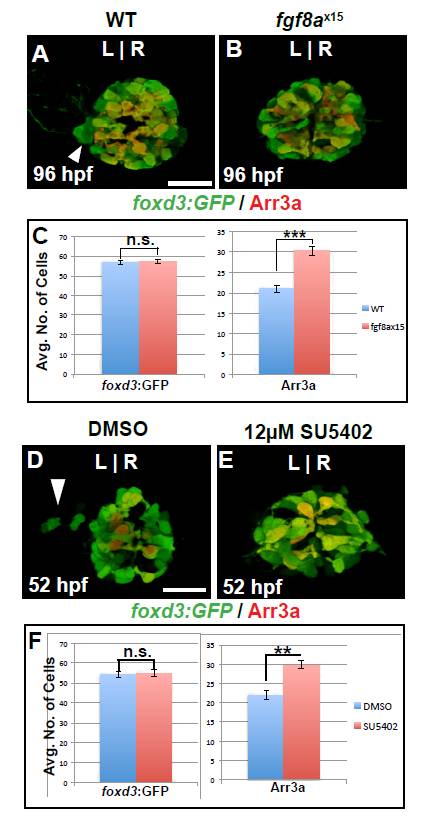Fig. S7 Selective increase in cone cells persists in fgf8ax15 mutant and SU5402-treated larvae. (A,B) Dorsal views of WT and fgf8ax15 mutants labeled with foxd3:GFP (pineal complex) and Arr3a (cone photoreceptors) at 96 hpf. fgf8ax15 mutants lack a distinct parapineal organ compared with WT (white arrowhead). (C) Graph quantifying the number of foxd3:GFP- and Arr3a-positive cells in wild-type and fgf8ax15 embryos at 96 hpf. fgf8ax15 and wild-type embryos have equivalent numbers of foxd3:GFP-expressing cells. However, fgf8ax15 mutants have more cone photoreceptors in the pineal complex than are seen in WT. (D,E) Dorsal views of DMSO- and SU5402-treated embryos with parapineal. SU5402-treated embryos lack obvious parapineal (white arrowhead). (F) Graph quantifying the number of Tg[foxd3:GFP] and Arr3a cells in 52 hpf larvae treated with DMSO or 12 μM SU5402 from 24 to 30 hpf. (***P<0.0005 by t-test). Error bars represent s.e.m. n.s., not significant. Scale bar: 25 μm.
Image
Figure Caption
Acknowledgments
This image is the copyrighted work of the attributed author or publisher, and
ZFIN has permission only to display this image to its users.
Additional permissions should be obtained from the applicable author or publisher of the image.
Full text @ Development

